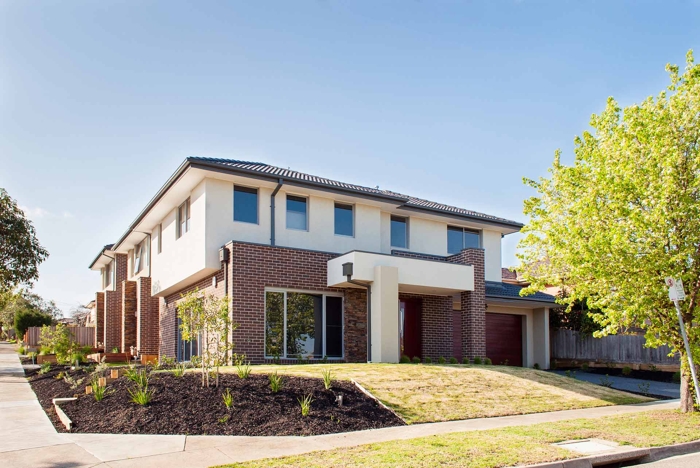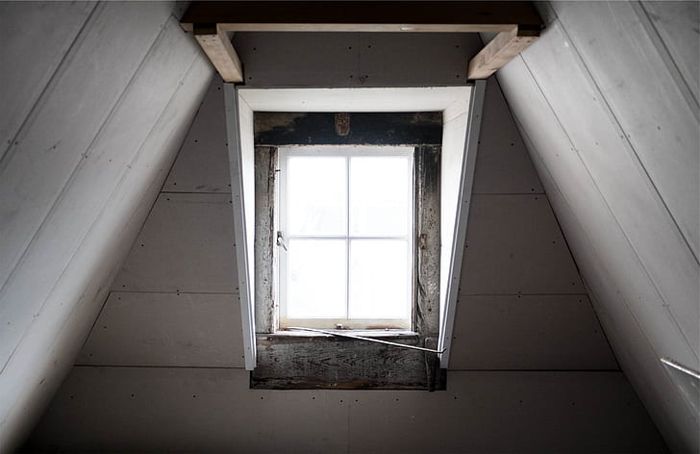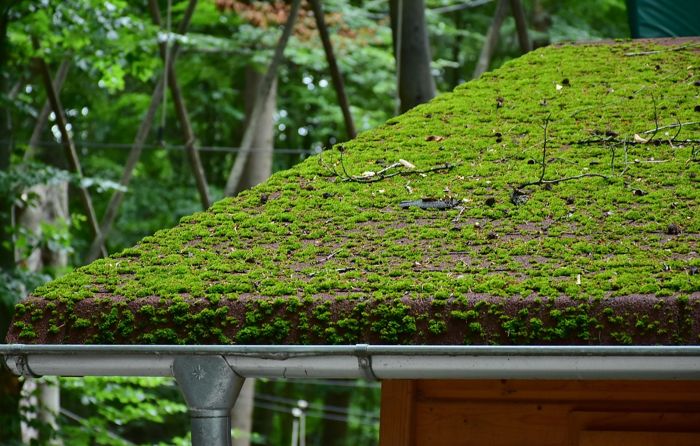Summer is a season of the sun, but it can also be a time of severe weather that can take a toll on your roof. High temperatures, UV rays, thunderstorms, and heavy winds can all contribute to roof damage. It’s crucial to be aware of the signs of summer damage to ensure the longevity and integrity of your roof. Here are some key indicators to watch out for:
One of the most obvious signs of roof damage is missing or damaged shingles. High winds and heavy rains can cause shingles to loosen, break, or even blow off completely. If you notice shingles on the ground around your home or visible patches on your roof where shingles are missing, it’s a clear sign that your roof has sustained damage.
Shingles that have started to curl or buckle are also a sign of damage. This can occur due to prolonged exposure to heat and UV rays, which cause the materials to deteriorate. Curling shingles can no longer provide effective protection against water infiltration, increasing the risk of leaks.
Asphalt shingles are coated with granules that help protect them from the sun’s UV rays. Over time, these granules can be worn away by the elements. If you notice granules in your gutters or downspouts, or if the shingles appear bare in places, this indicates significant wear and tear. Granule loss can accelerate the aging of your shingles and lead to further damage.

You Might Be Interested: What Your Attic Goes Through During Summer
Flashing is the material used to seal and protect joints and seams on your roof, such as around chimneys, vents, and skylights. Over the summer, intense heat can cause the flashing to crack or warp. Damaged flashing can allow water to seep into your home, leading to leaks and water damage.
Water stains on your ceiling or walls are a clear sign that your roof is leaking. These stains can appear as discoloration, streaks, or damp spots. Leaks can be caused by damaged shingles, flashing, or underlayment. If you notice any signs of water infiltration inside your home, it’s essential to address the issue promptly to prevent further damage.
A sagging roof is a severe sign of structural damage. This can be caused by prolonged exposure to moisture, which weakens the roof decking and supports. If you notice any areas of your roof that appear to be sagging or dipping, it’s crucial to have a professional inspect it immediately.
While moss and algae growth on your roof might not seem like a significant issue, it can indicate underlying problems. Moss can trap moisture against your roof, leading to rot and deterioration. Algae can cause discoloration and can also hold moisture, which can damage shingles over time.
Related: What Sparrows and Doves Can Do to Your Roof
If you notice a sudden increase in your energy bills during the summer months, it could be a sign that your roof is not providing adequate insulation. Damaged or deteriorated roofing materials can allow heat to penetrate your home, forcing your cooling system to work harder to maintain a comfortable temperature.
If you need an in-depth inspection of your roof for any damage this summer, don't hesitate to contact us at SJ Winn Construction. Just call us or visit our social media page to know more about what we can do for you.
It's a great day to go out and have fun on the parks and streets. As the sun's out, your home's facing the brunt of the heat. Your roof and attic absorb more heat and can cause significant problems to your home if you're not careful. Here are several ways your attic suffers during summer.
During the summer, attics can reach sweltering temperatures, often exceeding 150°F. This intense heat can warp wood structures and even dry or melt insulation.
High temperatures also make it harder for your air conditioning system to keep the house cool and can mean higher energy consumption and possible need for comprehensive repairs.
Proper attic ventilation can reduce possible damage and higher energy bills on your property. You can install vents or an attic fan to improve your roof and attic temperatures.

Summer brings not only heat but also humidity. A moist and humid attic creates an ideal environment for mold and mildew growth and causes irritation and health risks to occupants. Mold spores can spread through the air and exacerbate respiratory problems and allergic reactions.
To combat humidity, consider using a dehumidifier in your attic and ensure proper ventilation. Letting old air out and fresh air in a proper circulation system can prolong the lifespan of your roof and your attic.
Sealing any gaps and cracks can also prevent moist air from entering the attic. It may require a specialist to do properly, so ask your local roofing contractor for help.
Related: Attic Ventilation: Benefits and Construction Guidelines
The underlayment of your roof is a critical component that provides an extra layer of protection against water damage.
However, high temperatures and humidity can deteriorate the underlayment over time, compromising its effectiveness. Weak underlayment lets water seep through and cause water damage.
Fortunately, regular roof inspections can help identify underlayment issues early and have you replace worn-out underlayment before it fails completely and you save from costly repairs.
Summer is also a peak time for small animals, such as squirrels, raccoons, and birds, to seek shelter in attics.
These animals can cause significant damage by chewing through insulation, wiring, and wooden beams. They can also eat through your asphalt shingles – even their droppings are highly acidic to cause damage to your roof material.
In your attic, these pests may also create nests, leave behind droppings, and contribute to mold and mildew growth.
To prevent animal infiltration, ensure all entry points, such as vents, chimneys, and gaps, are securely sealed. You can use circular deterrents to discourage squirrels and other small, climbing animals from accessing your attic through the downspouts.
Installing mesh screens over openings can also deter animals from entering your attic. You will need an expert contractor to design your mesh barrier for optimal performance.
Related: Preventing Animal Infiltration During Spring
While summer is generally associated with dry weather, many regions experience sudden and heavy rainstorms. If your roof and attic are not adequately prepared, these rainstorms can lead to leaks.
Again, regular roof maintenance lets you inspect and replace missing shingles and clear gutters just in time before the rainstorms arrive. Additionally, ensure that your attic has a proper drainage system to handle any water that may enter.
If you need a dependable roofer for your roof maintenance, repair, and installation needs, you can always count on us at SJ Winn Construction, a GAF-certified roofing company. Call us today or visit our social media page to know more.
In just a few weeks, summer will replace spring. With the hot season incoming, a well-prepared roof will avoid many possible roofing damage that extreme heat brings. However, homeowners must also have ample protection between extreme heat and flashes of heavy rain common during the season.
In today's post, you'll learn all there is about what your roof must endure during summer and reliable methods you can use to keep it in good shape.
Temperatures that rise up to 26 degrees Celsius can be a drastic change from the typical cool of most Torrington, CT, homes. A jump of 10 degrees can cause structural changes not just to your cooling bills, but also your attic, asphalt shingles, or your entire property. To combat high heat, consider using roof coatings to reflect excess heat and provide consistent temperatures. Better yet, you can also replace your entire roof with cool asphalt shingle materials.
But it's not just shingles you should think of to lower your roof's heat index.
Your asphalt shingles make up the top roof layer – the underlayment and your attic makes up the lower layer. An extremely hot attic has heat pushing against your underlayment and the top roof layer. Because of their high humidity, they can cause moisture to seep through and evaporate immediately as they touch your roof material.
Hot, evaporated water can cause bruising on your asphalt shingles, a sure sign you'll find plenty of your asphalt shingles bruising and cracking over time. Have a professional roofer check your soffit, fascia, and entire attic ventilation system to give hot air a way to escape and prevent damage to your roof.
Related: Why Pay Attention to Roof Ventilation?

Bruising and cracking occurs when trapped water – either from attic humidity or moisture – pushes against the asphalt shingles. It can also happen to any roofing material. The escaping water will loosen the asphalt shingles' protective granules – life-prolonging parts that keep it in good shape for decades.
Over time, you'll see unattended asphalt shingle bruises start cracking and falling apart. This situation becomes more apparent when strong storms and heavy rains arrive – damaged or missing shingles can cause roof leaks by going straight to your underlayment and existing away from your gutters and downspouts.
Summer is all about heat, but when there's heat, there's also cool air. Heavy rains occur when extremely hot and cold air clash against each other and create condensation. An unprepared roof is most likely to endure massive damage from heavy rains, so have professionals inspect your roof and address all small and preventable issues before the heavy rains worsen the situation.
Extremely hot weather in moist areas near lakes, ponds, or even fountains can create humid environments. While winds can blow away humidity and give your roof some 'breathing room,' chances are your roofs have bruises that lead to cracks. If possible, have your roof replaced with humidity resistant materials like metal or tile roofs rather than asphalt shingles – they can handle the humidity better with many anti-rust and humidity coating options.
If you're ready to have your roof repaired or replaced, you can always count on a GAF Master Elite roofing company. SJ Winn Construction is always here to give you peace of mind that your roof is ready for summer. Call us today or visit our social media page to know more.
Metal roofs are known for their durability and longevity, but they can also absorb a lot of heat, making your home uncomfortable and increasing your cooling costs. Fortunately, there are several ways to reduce heat from your metal roof and keep your home cool and energy-efficient.
One of the most effective ways to reduce heat absorption in your metal roof is to apply a reflective roof coating. These coatings are designed to reflect the sun's rays, keeping your roof cooler and reducing the amount of heat that is transferred to your home. Reflective coatings can also help extend the life of your roof by protecting it from UV damage.
Proper insulation is key to maintaining a comfortable temperature in your home. Insulating your attic can help prevent heat from transferring from your roof to the interior of your home. Spray foam insulation is a popular choice for metal roofs because it provides a tight seal and excellent thermal performance.
Related: Energy-Efficient Roof Materials for Replacement
Good ventilation is essential for keeping your attic and home cool. Installing ridge vents and soffit vents can help create a continuous flow of air through your attic, preventing heat buildup and reducing the strain on your air conditioning system. It's important to ensure that your attic is properly ventilated to avoid moisture buildup, which can lead to mold and mildew growth.

Planting shade trees near your home can help reduce the amount of heat that reaches your roof. Trees can provide natural shade, keeping your roof cooler and reducing your cooling costs. Additionally, trees can improve air quality, provide habitat for wildlife, and enhance the beauty of your property.
Related: Dealing With Attic Infiltration During Spring
If you're considering replacing your roof, choosing cool roofing materials can help reduce heat absorption and keep your home cooler. Cool roofing materials are designed to reflect more sunlight and absorb less heat than traditional roofing materials. Options include metal roofing with reflective coatings, clay or concrete tiles with light colors, and asphalt shingles with reflective granules.
Regular maintenance of your metal roof can help ensure its longevity and performance. Keep your roof clean and free of debris to prevent heat buildup and reduce the risk of damage. Inspect your roof regularly for signs of wear and tear, and repair any damaged areas promptly to prevent heat from entering your home.
Proper installation of your metal roof is crucial to its performance and energy efficiency. Hire a professional roofing contractor with experience installing metal roofs to ensure that your roof is installed correctly and that all ventilation and insulation requirements are met.
If you need excellent roofing solutions, you can always count on us at SJ Winn Construction, your GAF-certified roofers in Torrington, CT. Call us today or visit our social media page to learn more about what we can do for you.
Aside from protecting your home, did you know that your roof plays a major role in its energy efficiency? By choosing high-quality, energy-efficient roofs, you can significantly lower your energy expenditure and save up on energy bills. With summer coming around the corner in the next few months, you'll be glad you had energy-efficiency focused roof replacements.
Let's learn more about them in today's post.
When selecting an energy-efficient roofing material, consider the following options:
Cool Roofs: These are made of reflective materials that deflect sunlight and absorb less heat than traditional roofing materials. Most metal, tile, and asphalt shingle manufacturers have roofing systems that have the traits of a cool roof.
Metal Roofing: Despite being made from highly conductive material, metal roofs are highly reflective and effectively reduce heat transfer into the building. Using special coatings, they can reflect heat and absorb less of it during summer. Furthermore, they're widely popular because of their durability and lifespan.
Green Roofs: Green or living roofs are specially constructed roofs with plants and greenery to reduce your roof's heat absorption. With a layer of soil and trees keeping your home in good shape, you can conveniently insulate your home. Moreover, well-constructed ones will also improve air quality and provide additional environmental benefits.
Solar Panels: While not a roofing material, solar panels can be installed on the roof to harness solar energy and reduce reliance on traditional energy sources. They also reduce heat absorption by acting as a secondary protective layer above your existing roof.
Related: A Roofing Maintenance Checklist for Spring

Aside from roofing quality, other components also reduce energy consumption by improving insulation or indoor temperatures.
Excellent insulation systems material reduces heat transfer from the roof to your attic and vice versa. Insulation materials such as fiberglass, cellulose, or foam board can be installed under the roof deck or between the rafters to improve energy efficiency.
Next, consider having adequate roof ventilation to prevent heat buildup in the attic and improve the lifespan of both your heating and cooling system and your roof. By letting hot air plenty of avenues to escape from your roof, you extend your roof's lifespan and reduce your cooling bills at the same time.
Related: Prevent Small Animal Attic Infiltration During Spring
Lastly, be vigilant about sealing gaps and cracks can prevent heat loss in the winter and heat gain in the summer. This can be a tricky problem as many of them are typically hidden from sight – but not to a professional roofing company such as SJ Winn Construction.
If you need quality roofing services in Torrington, CT, you can always count on us at SJ Winn Construction, a reliable GAF-certified roofing company in the neighborhood. Call us today or visit our social media page to know more about what we can do for you.
If you ask any professional roofer, they would mention that spring is the optimal season for roof replacements. And rightfully so – spring has that perfect balance of favorable weather conditions and clear skies optimal for roof replacements. In this post, let's talk about why you should consider having that long put-off roof replacement this season.
Spring brings mild temperatures and fewer weather disruptions – which means the weather is truly in our favor as it's the optimal weather for what we do. Unlike the scorching heat of summer or the unpredictable storms of fall, spring offers a comfortable environment without any disruptions of strong winds, rains, and snowfall to tarnish our work or affect our ability to perform our best.
Spring reveals your roof's issues quicker than other seasons. By scheduling your roof replacement in spring, you can expect your roofers to find every small clear and hidden damage, leaks, and other problems your roof might have. You can have peace of mind knowing that your home has a roof that can protect you from the more severe weather conditions beyond springtime.
Related: A Roof Maintenance List for Springtime
Spring roof replacements allow for the installation of high-quality materials that can withstand the elements. Most renowned roof manufacturers like GAF prefer spring or summer when installing their products – most especially spring due to its warm but not scorching heat that could affect the expansion or contraction of asphalt shingles.

Spring is a popular time for home renovations, including roof replacements. Many roofers endorse their services during spring. While the traffic might be high as many homeowners also have the same idea of having their roof replacements during spring and summer, you can be sure your roof is well installed. Besides, a GAF-certified roofer knows how to queue and balance their schedule properly.
Related: Why Always Go for a Tear-Off Roof Replacement?
Need quality roof replacement services for your home? Turn to the best – SJ Winn Construction. We're a GAF-certified roofer renowned for our quality workmanship and a service that goes above and beyond your expectations. Call us today or visit our social media page to know more or schedule an appointment with us.
As spring rolls around, so does the potential for thunderstorms. Wherever cool and hot winds and temperatures collide, strong storms are always present – even during the pristine and relaxing season of spring. To make sure your roof is ready for heavy rain, always do the following
Regular roof inspections are crucial for identifying and addressing any issues before they become major problems. For instance, you might discover that your roof has cracked or split asphalt shingles – these can easily give out during the strongest rains. With an expert checking and repairing your roof for signs of damage, you can be sure it's ready for anything.
If you notice any damage during your roof inspection, it's important to repair it promptly. Replace missing or damaged shingles, repair any leaks, and reinforce weak areas to ensure your roof can withstand the elements. If there's an area of your roof you're unsure about the performance, consider repairing or replacing that section with the help of a professional.

Leaves, twigs, debris, and other objects can clog your gutters and downspouts, regardless of how well designed it is or the durability and reliability of its materials. Clean your gutters regularly to ensure they are free of debris and allow water to flow freely. Thunderstorms are known to clog and cause overflow on your roofs, effectively shortening its lifespan and performance.
Trim back any branches that hang over your roof to reduce the risk of damage. Don't do this by yourself – ask a tree-trimming professional to do this for you. Overhanging branches can also collapse during the strongest of storms and cause damage to your asphalt shingles and roof structure.
If you live in an area prone to severe weather, consider reinforcing your roof to improve its resilience by installing impact-resistant shingles, adding roof straps or clips to secure the roof to the structure. Also consider improving your attic insulation and ventilation to reduce any risk of wind damage during windy thunderstorms.
All that's left to improve your roof for spring thunderstorms is a reliable roofing contractor who'll be with you every step of the way. You can always count on us at SJ Winn Construction, your highly dependable GAF-certified roofing company in Torrington, CT. Call us today or visit our social media page to know more about what we can do for you.
Whenever you look at a house, the first thing you notice are the roof and siding. These two components work together to create a cohesive look that can significantly enhance your home's curb appeal. To create a visually appealing exterior that looks great from every angle, here are a few things you'll want to consider.
You can't just call your home a 'classic' but use a low-slope roof suitable for most modern properties. The first step in ensuring that your roofing and siding match is to consider the style of your home. Different architectural styles call for different roofing and siding materials. For example, a traditional colonial-style home might look best with a classic asphalt shingle roof and clapboard siding, while a modern home might benefit from a sleek metal roof and minimalist siding.
Colors make everything feel seamless or gaudy, depending on who's looking. Choose roofing and siding colors that complement each other. Look for ones that are in the same color family or that have similar undertones. For example, if you choose a warm-toned roof, such as red or brown, consider siding in a complementary warm tone, such as beige or tan.

Flat-textured siding with a plain standing seam metal roof isn't going to be of visual interest to anyone. Mixing textures can add visual interest to your home's exterior. But, don't just jump in and choose what looks great on its own – it's essential to ensure that the textures complement each other. For example, if you choose a smooth metal roof, consider siding with a subtle texture, such as wood grain or stucco, to create a balanced look.
Often, seamless colors work, but if you want to stand out, contrasting colors make everything look much more interesting and unique. Contrasts highlight architectural features and add depth to your home's exterior. Consider using a slightly darker or lighter shade of siding than your roof to create a subtle contrast that enhances the overall aesthetic.
Another way to ensure that your roofing and siding match aesthetically is to take inspiration from your surroundings. Consider the natural landscape, neighboring homes, and the overall aesthetic of your neighborhood. This can help you choose roofing and siding materials that complement the existing environment and create a cohesive look.
Don't trust the flyers – see and feel what you're going to use before you buy your siding and roofing materials. Before making a final decision, it's a good idea to obtain samples of your chosen roofing and siding materials and place them together in natural light. This will allow you to see how the colors and textures interact and ensure that they complement each other. Try to see the materials together in the morning, noon, and afternoon.
If you're unsure about which roofing and siding materials to choose or how to ensure they match aesthetically, consider consulting with a professional. A roofing or siding contractor or a home design expert can provide valuable insight and help you make the best choice for your home. SJ Winn Construction can advise you on the most suitable textures and colors for your home's architecture and your existing siding.
If you're ready to choose the roofing you'd like to use, trust a GAF-certified roofer to get the job done. SJ WInn Construction is a local manufacturer in Torrington, CT, you can trust for all your roof installation and replacement needs. Call us today and feel the GAF Master Elite difference.
We know exactly what you feel when you see the leak lines creeping on your ceiling during a massive rainstorm or the loud impacts of hailstones during a hailstorm – you wish you could do something to prevent the damage on your roof. But, a high-quality roof (and ceiling) is designed to protect you and minimize damage to the other components of your roof.
Once the storm settles, there are a few things you can do to restore your roof and attic back to its condition before the storm has passed and hopefully minimize your expenses.
When assessing damage to your roof, it's crucial to prioritize safety above all else. For now, avoid entering areas with damaged ceilings and roofing materials. If you should, do so with caution. This is especially true if there are exposed wiring in your attic (if any) as these can be extremely dangerous. If you can take photos as part of your documentation for insurance, do so at a safe distance.
As mentioned earlier, documenting the damage is an essential step in the process of dealing with storm damage. Before roofers can begin any repairs, they can thoroughly document the damage to your roof and observe areas that have potentially serious problems. By taking photographs and videos from multiple angles, they have a clear view of what needs to be done and can give you a rough estimate on everything your roof needs.

Another aspect of documenting roof damage is getting help from your insurance company. You or your roofer can contact the insurer to report the incident alongside the necessary documentation. These cna be the photos and videos of the damage. With the right information, you and your roofer are well prepared to answer any questions they may have about the damage and the circumstances surrounding it.
This is the part a reliable local roofer can help you. They can make temporary repairs to your property to prevent further damage as you await your insurer's decision and possible adjustments. In most cases, the temporary repairs include placing a tarp over a damaged roof and replacing some crucial components that reduce the damage to your roof. Also keep in mind to keep all receipts for these repairs, as they may be reimbursable by your insurance company.
Once your insurer approves your claim, your professional contractor can now make the necessary repairs. When hiring a contractor, look for reputable contractors with experience in storm damage repair. Get multiple quotes and check references before making a decision.
Need help with recent storm damage on your roof? Count on SJ Winn Construction to have your back. Call us today or talk to us on our to learn how we can help you. We're always here to serve you, and we've recently expanded in various areas in Connecticut!
Gutters are crucial for protecting your home from water damage by directing rainwater away from the foundation. Over time, gutters can become damaged or worn out, leading to leaks and other issues. When faced with gutter problems, homeowners often wonder whether to repair or replace them. Here are reasons why replacing your gutters may be the better long-term solution.
One of the primary factors to consider when deciding whether to repair or replace your gutters is their age. Gutters typically last between 20 and 50 years, depending on the material and maintenance. If your gutters are nearing the end of their lifespan, it may be more cost-effective to replace them rather than continue to repair them.

The extent of the damage to your gutters is another crucial factor to consider. If the damage is minor, such as a small leak or a loose bracket, repairs may be sufficient. However, if the gutters are extensively damaged, such as rusted through or severely bent, replacement may be the only option.
While repairs are often cheaper upfront, they may end up costing you more in the long run. Continual repairs can add up over time, especially if the gutters are old or prone to damage. In contrast, replacing your gutters may be a more cost-effective solution, as new gutters are likely to require fewer repairs and maintenance.
New gutter systems offer improved technology and features that can enhance the performance and durability of your gutters. For example, seamless gutters are less prone to leaks and clogs than traditional sectional gutters. Additionally, gutter guards can help prevent debris buildup, reducing the need for regular cleaning and maintenance.
Old, worn-out gutters can detract from the overall appearance of your home. By replacing your gutters, you can improve the curb appeal of your home and enhance its value. New gutters come in a variety of styles and colors, allowing you to choose a design that complements your home's exterior.
The primary purpose of gutters is to protect your home from water damage. Damaged or ineffective gutters can lead to water pooling around your foundation, which can cause erosion, flooding, and structural damage. By replacing your gutters, you can ensure that your home is adequately protected from water damage.
Properly functioning gutters can also improve the energy efficiency of your home. By directing rainwater away from your foundation, gutters help prevent water from seeping into your basement or crawl space, which can lead to dampness and mold growth. Additionally, gutters can help prevent water from infiltrating your walls, which can reduce heat loss in the winter and improve energy efficiency.
By investing in new gutters, you can improve your home's performance, appearance, and value, while ensuring it's adequately protected from water damage. If you're unsure whether to repair or replace your gutters, consult with SJ Winn Construction, a reputable GAF-certified roofer you can trust. Call us today or visit our website to learn how we can help you.
156 Torrington Rd., Winsted,
Connecticut 06098
Phone: 860-379-8863
Email: sjwinnconstruction@gmail.com